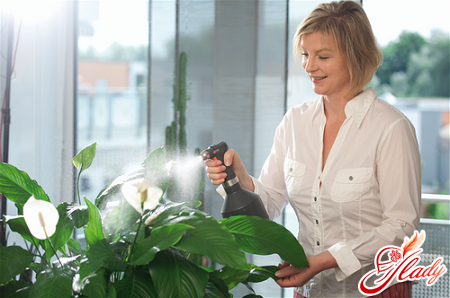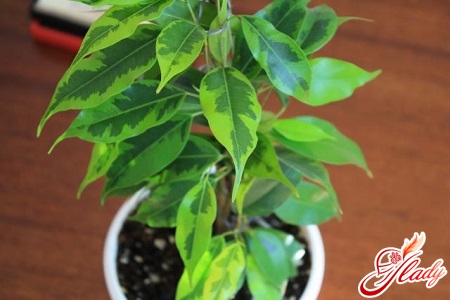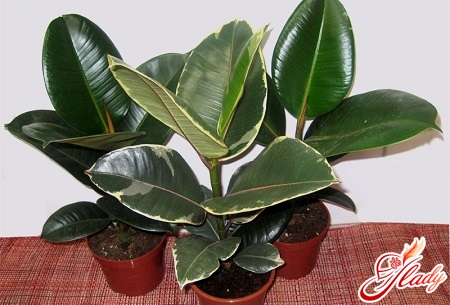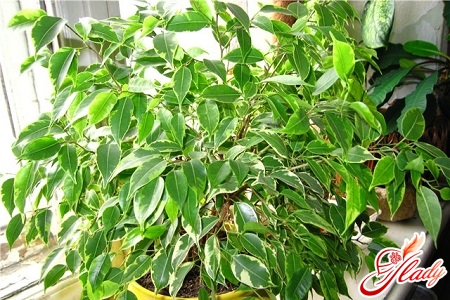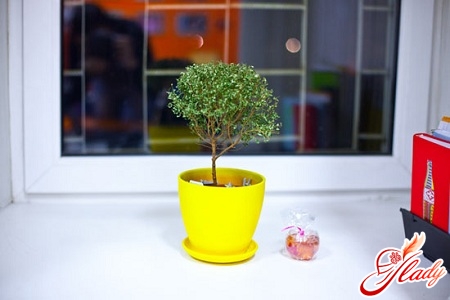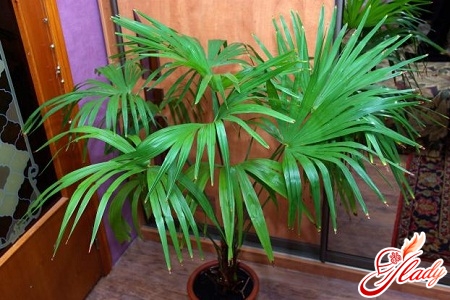 Refill your collection of indoor flowersa real live palm tree? Why not? Indoor palms are unpretentious plants, it is not so difficult to take care of them, but it's not worth talking about how effective this tree will look in the house. True, they have one drawback - very much a large palm tree grows. But they reach their gigantic sizes not soon. So you will have a long time to enjoy the sight of a small and neat little palm. The case for small - choose the right kind of palm and learn to look after it. All types of palm trees are divided into two main groups (in the form of leaves): pinnate (dates, coconuts, hamedorrhea, hoveya) and fan (trachicarpus, hamerops, palm of Liviston). What are they? The date palm (Genus Phoenix) numbers as many as seventeen species. In the wild, it grows mainly in Africa and India. But the actual popular home palm "date dates" in the wild and does not exist. This tree with a columned "shaggy" trunk will eventually grow to the ceiling! The leaves are dark green, cirrus, curved arc can reach six meters long. By the way, it is easy to grow this palm from the bone of a dried date, which will necessarily germinate in an ordinary flowerpot (although, it takes a lot of time to do this). Yes, and more or less decorative form this tree will only acquire in five to seven years. Therefore, a date palm with inedible fruits is more suitable for indoor growing - the date of Robelen. It is a low (up to two meters) decorative tree with a lush crown, gracefully curved leaves and an indispensable attribute of a palm tree - a "shaggy" trunk (and sometimes with several trunks). Areca is the most beautiful palm tree that came to us from the tropical forests of India. She has a flexible trunk, ringed with a set of characteristic scars (remains of petioles of leaves). A crown of areca is a powerful bundle of pinnate leaves on the "crown" of the trunk. In room conditions, it grows to two meters in height, and its leaves reach a meter length. Trachycarpus is considered the most adapted to room conditions a variety of indoor palms. It is a palm tree with a straight "bottle-shaped" trunk and huge fan-leaves. It is noteworthy that the trachycarpus blossoms with fragrant white or yellow flowers and even gives fruits - blue and black berries. The most known of its two types: trachycarpus Martius and trachycarpus Fortune. Supplements varieties of indoor palms and genus of cariota. This amazing tree looks very different from its fellow "palm tribe". The unique leaves of this palm have the shape of an elongated triangle, the wide ends of which are as if specially, but carelessly torn. In addition, this is the fastest growing tree from all indoor palms, but it lives for a relatively short time - about twenty years. Coconut palm is not the best option for home growing. It is very, very light-loving, and therefore more suitable for winter gardens and greenhouses. In room conditions, usually contain only Veddel coconut and nut-coconut coconut. For home cultivation, such palm trees as the Belomor hoveya and Foster's hovate are all perfectly suited to all kinds of hamedores, the Liviston palm, the hamerops squat.
Refill your collection of indoor flowersa real live palm tree? Why not? Indoor palms are unpretentious plants, it is not so difficult to take care of them, but it's not worth talking about how effective this tree will look in the house. True, they have one drawback - very much a large palm tree grows. But they reach their gigantic sizes not soon. So you will have a long time to enjoy the sight of a small and neat little palm. The case for small - choose the right kind of palm and learn to look after it. All types of palm trees are divided into two main groups (in the form of leaves): pinnate (dates, coconuts, hamedorrhea, hoveya) and fan (trachicarpus, hamerops, palm of Liviston). What are they? The date palm (Genus Phoenix) numbers as many as seventeen species. In the wild, it grows mainly in Africa and India. But the actual popular home palm "date dates" in the wild and does not exist. This tree with a columned "shaggy" trunk will eventually grow to the ceiling! The leaves are dark green, cirrus, curved arc can reach six meters long. By the way, it is easy to grow this palm from the bone of a dried date, which will necessarily germinate in an ordinary flowerpot (although, it takes a lot of time to do this). Yes, and more or less decorative form this tree will only acquire in five to seven years. Therefore, a date palm with inedible fruits is more suitable for indoor growing - the date of Robelen. It is a low (up to two meters) decorative tree with a lush crown, gracefully curved leaves and an indispensable attribute of a palm tree - a "shaggy" trunk (and sometimes with several trunks). Areca is the most beautiful palm tree that came to us from the tropical forests of India. She has a flexible trunk, ringed with a set of characteristic scars (remains of petioles of leaves). A crown of areca is a powerful bundle of pinnate leaves on the "crown" of the trunk. In room conditions, it grows to two meters in height, and its leaves reach a meter length. Trachycarpus is considered the most adapted to room conditions a variety of indoor palms. It is a palm tree with a straight "bottle-shaped" trunk and huge fan-leaves. It is noteworthy that the trachycarpus blossoms with fragrant white or yellow flowers and even gives fruits - blue and black berries. The most known of its two types: trachycarpus Martius and trachycarpus Fortune. Supplements varieties of indoor palms and genus of cariota. This amazing tree looks very different from its fellow "palm tribe". The unique leaves of this palm have the shape of an elongated triangle, the wide ends of which are as if specially, but carelessly torn. In addition, this is the fastest growing tree from all indoor palms, but it lives for a relatively short time - about twenty years. Coconut palm is not the best option for home growing. It is very, very light-loving, and therefore more suitable for winter gardens and greenhouses. In room conditions, usually contain only Veddel coconut and nut-coconut coconut. For home cultivation, such palm trees as the Belomor hoveya and Foster's hovate are all perfectly suited to all kinds of hamedores, the Liviston palm, the hamerops squat.
Conditions of detention
Almost all indoor palms requirethe same conditions of detention. Most of them in the first place will need a spacious room. Because even if your palm has not yet reached its impressive size, it will not tolerate a close neighborhood with other indoor flowers, since in fact it is a single plant. Like any room flowers, the palm needs proper lighting, comfortable temperature and sufficient humidity.
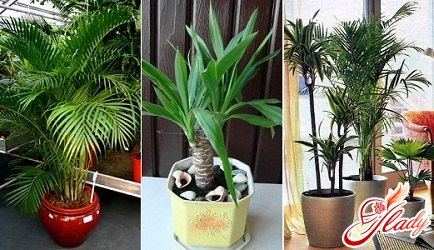
How to care for a palm tree?
Such a houseplant as a houseplantthe palm tree, in addition to suitable living conditions, also requires a simple but regular care. How to care for her? The main care for indoor palms is reduced to proper watering, timely transplantation, feeding and protection against diseases. Watering. In summer - daily and plentiful, in the winter - moderate. In general, the frequency and intensity of irrigation is directly related to the air temperature. The hotter, the more often and more generously we water the palm. However, waterlogging for it is also undesirable. The earth in the tub with the flower should be moist all the time, but only lightly. I transplanted palm trees as I grew. Young and actively growing trees - annually, more adults - less often. The need for transplantation is determined by the tightness of the pot. From a small floral tub, the palm is transplanted in spring into a more spacious container of cylindrical shape. The new pot should be quite a bit larger than before. The transplantation itself is carried out according to the general rules of indoor floriculture. Like other indoor flowers, palms need to be fed. Young or newly transplanted trees do not need feeding for the first six months. Adult palms fertilize during the period of active growth (March-September) once a week. Feed them with conventional flower fertilizers according to the instructions on the package. As you can see, unpretentious palma room care requires almost minimal. If you take good care of her, then your palm will not hurt. However, such troubles are not ruled out. The so-called diseases of indoor palms:
- Brown (dry) tips of leaves. The reason is dry air, insufficient watering. Treatment - regular watering, sprinkling, pruning dried ends.
- Yellowing foliage. The reason is insufficient watering.
- Rusty spots on the leaves. The reason is the overmoistening of the soil, watering with hard water, a sharp drop in temperature.
- Drying of young leaves. The reason is the excess of sunlight. Treatment is the shading of the plant.
- Cease growth. The reason - too cold and damp room, lack of nutrients. Treatment - moving the plant to a warm place, fertilizing.
- Drying of the lower leaves. The natural process. Such leaves are simply removed, neatly cutting off the trunk.
Here is an interesting indoor flower palm - a spectacular, large and unpretentious plant. A small piece of tropical forest in a tub. We advise you to read:




